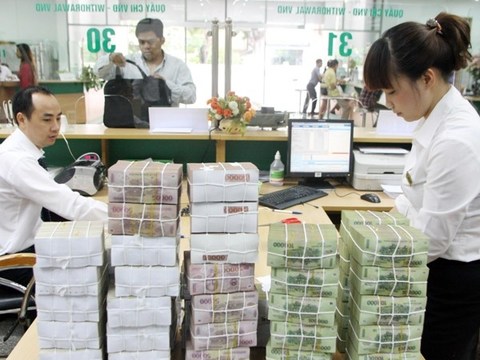More monetary easing measures forecast in 2020
More monetary easing measures forecast in 2020
The State Bank of Việt Nam (SBV) is expected to further take monetary easing measures to support the country’s GDP growth target of above 5 per cent this year in light of a weak economic outlook, experts forecast. 
“We forecast an additional 50 basis points of interest rate cuts, which would take the refinancing rate to 4.0 per cent and discount rate to 2.5 per cent by end of 2020,” Fitch Solutions experts said.
The SBV cut its benchmark interest rates by 50 basis points on May 12. Accordingly, the refinancing rate was reduced to 4.5 per cent from 5.0 per cent, discount rate to 3.0 per cent from 3.5 per cent, and the overnight inter-bank lending rate to 5.5 per cent, from 6.0 per cent with effect from May 13.
According to the experts, a weak growth outlook in 2020 will likely spur further monetary easing. Fitch forecast Việt Nam’s real GDP growth to decelerate to 2.8 per cent in 2020, from 7.0 per cent in 2019, as it continuously forecast weak external demand from a world economy in recession to hamper a recovery in Việt Nam’s large manufacturing industry, and a general aversion to international air travel due to contagion fears to continue buffeting the tourism sector.
“That said, we now see upside risks to our growth forecast as Việt Nam is in the process of gradually reopening its economy with the easing of movement restrictions, following quick and stringent COVID-19 containment measures over the first four months of the year, in addition to growing reports of companies seeking to relocate their production from China to Việt Nam.”
As Fitch still views the Government’s real GDP growth target for 2020 of above 5 overly ambitious given a benign global economic backdrop, it believes that the SBV is likely to persist with its monetary easing cycle over the coming months, in the form of benchmark interest rate cuts and macroprudential measures to support the Government’s achievement of its growth target.
In addition, Fitch said manageable inflation at below the Government’s 4.0 per cent target in 2020 will also allow for further monetary easing.
“We forecast inflation to average 3.8 per cent in 2020, down from 4.9 per cent year-on-year over the first four months of 2020. We expect subdued fuel prices due to the ongoing global supply glut to result in a transport price deflation and low core inflation due to weaker domestic demand to partially offset high food inflation brought about by the African swine fever which prompted a significant culling of the hog herd towards end-2019, pushing up meat prices.”
Despite Fitch’s expectations for further monetary easing, it maintained its view that the key problem now is a lack of loan demand and investment appetite amid elevated economic uncertainty brought about by the COVID-19 shock on the world economy. As such, further interest rate cuts at this juncture will not provide much of a boost to the economy.
























